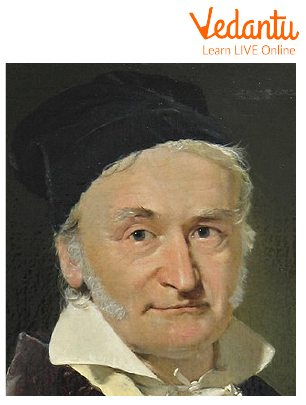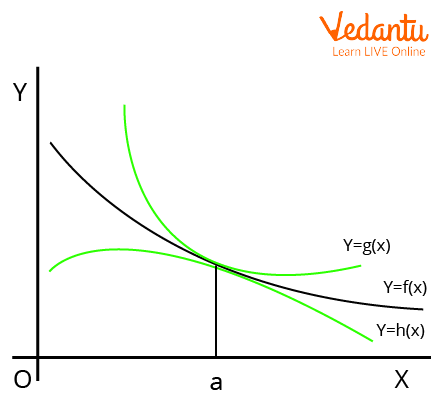




How to Apply the Squeeze Theorem in Calculus Problems
Squeeze Theorem, also known as Sandwich Theorem, is a theorem used to find the limits of a function that is squeezed between two functions. The modern Squeeze form was given by Carl Friedrich Gauss. In this article, we will discuss the Squeeze theorem and the steps to apply and prove the Squeeze theorem in questions. Squeeze theorem proof and examples will be elaborated in this article in simpler form for better clarity of the topic and how to do Squeeze theorem in function will be discussed here.
History of Carl Friedrich Gauss

Carl Friedrich Gauss
Name: Carl Friedrich Gauss
Born: 30 April 1777
Died: 23 February 1855
Field: Mathematics
Nationality: German
Statement of Squeeze Theorem
According to Squeeze Theorem, if g(x), f(x), h(x) are three functions such that \[g(x) \leq f(x) \leq h(x)\] and at any point a \[\mathop {{\rm{\;}}\lim }\limits_{x \to a} g(x) = \mathop {{\rm{\;}}\lim }\limits_{x \to a} h(x) = L \], then \[\mathop {{\rm{\;}}\lim }\limits_{x \to a} f(x) = L\].
Squeeze Theorem Proof
Assume that $g(x) \leq f(x) \leq h(x)$ and $\mathop {{\rm{\;}}\lim }\limits_{x \to a} g(x)=\mathop {{\rm{\;}}\lim }\limits_{x \to a} h(x)=L$.

Squeeze Theorem
Using the definition of limits,
$\Rightarrow \mathop {{\rm{\;}}\lim }\limits_{x \to a} g(x)=L \text { means that } \forall \in>0, exists \delta_{1}>0$ such that
$\Rightarrow|x-a|<\delta_{1}$
$\Rightarrow |x-a| < \delta_{1}$
$\Rightarrow|g(x)-L|< \epsilon$
$\Rightarrow - \epsilon < g(x)-L< \epsilon \ldots \text { (1) } $(expanding using property of modulus)
$\Rightarrow \lim _{x \rightarrow a} h(x)=L \text { using definition of limits again } \forall \in>0, \exists \delta_{2}>0 \text { such that }$
$\Rightarrow |x-a| < \delta_{2} $
$\Rightarrow |x-a| < \delta_{2} $
$\Rightarrow |h(x)-L| < \epsilon$
$\Rightarrow - \epsilon < h(x)-L < \epsilon \ldots \text { (2) }$ (expanding using property of modulus)
Now, it is given that $g(x) \leq f(x) \leq h(x)$.
Subtracting $L$ from each side of the above expression, we get
$\Rightarrow g(x)-L \leq f(x)-L \leq h(x)-L$
Let us choose $\delta=minimum \left\{\delta_{1}, \delta_{2}\right\}$,
we have, whenever $|x-a| < \delta$,
$\Rightarrow - \epsilon < g(x)-L \leq f(x)-L \leq h(x)-L <\epsilon \text { (using (1) and (2)) }$
So, from the above expression, we have
$\Rightarrow - \epsilon < f(x)-L < \epsilon$
$\Rightarrow \mathop {{\rm{\;}}\lim }\limits_{x \to a} f(x) = L$
Hence, the squeeze theorem is proved.
Limitations of Squeeze Theorem
The squeeze theorem is not applicable if left and right function limits are not equal.
The squeeze Theorem does not apply if we know the limits of any of two functions other than both extreme functions.
Applications of Squeeze Theorem
The squeeze Theorem is used to reduce the tedious calculation of the limits of some functions.
The squeeze Theorem can be related to the converging power of the lense.
Squeeze Theorem Examples
1. Evaluate the limit $\mathop {{\rm{\;}}\lim }\limits_{x \to 0}\left(x \cdot \cos \left(\dfrac{1}{x}\right)\right)$, if it exists.
Ans: We know that $-1 \leq \cos \left(\frac{1}{x}\right) \leq 1$ for all $x \neq 0$.
Then, $-x \leq x \cdot \cos \left(\frac{1}{x}\right) \leq x$, so
$\Rightarrow \mathop {{\rm{\;}}\lim }\limits_{x \to 0}(-x) \leq \mathop {{\rm{\;}}\lim }\limits_{x \to 0} \left(x \cdot \cos \left(\frac{1}{x}\right)\right) \leq \mathop {{\rm{\;}}\lim }\limits_{x \to 0} x$
Since $\mathop {{\rm{\;}}\lim }\limits_{x \to 0}(-x)=0=\mathop {{\rm{\;}}\lim }\limits_{x \to 0} x$,
we see that
$\Rightarrow \mathop {{\rm{\;}}\lim }\limits_{x \to 0}\left(x \cdot \cos \left(\frac{1}{x}\right)\right)=0$.
2. Evaluate the limit using the Squeeze Theorem:
$\mathop {{\rm{\;}}\lim }\limits_{x \to 0} x^{2} \cos \frac{5}{x}$
Ans: We know that $-1 \leq \cos \frac{1}{x} \leq 1$.
Next, multiplying the inequality by $x^{2}$, we have
$\Rightarrow-x^{2} \leq x^{2} \cos \frac{5}{x} \leq x^{2}$
Take the limit of each part of the inequality.
$\Rightarrow \mathop {{\rm{\;}}\lim }\limits_{x \to 0}\left(-x^{2}\right) \leq \mathop {{\rm{\;}}\lim }\limits_{x \to 0} x^{2} \cos \frac{5}{x} \leq \mathop {{\rm{\;}}\lim }\limits_{x \to 0} x^{2}$
Next, we know that
$\Rightarrow \mathop {{\rm{\;}}\lim }\limits_{x \to 0}\left(-x^{2}\right)=0 \text { and } \mathop {{\rm{\;}}\lim }\limits_{x \to 0}\left(x^{2}\right)=0$.
Thus, we have
$\Rightarrow 0 \leq \mathop {{\rm{\;}}\lim }\limits_{x \to 0} x^{2} \cos \frac{5}{x} \leq 0$
So, $\mathop {{\rm{\;}}\lim }\limits_{x \to 0} x^{2} \cos \frac{5}{x}=0$
3. Evaluate the limit using the Squeeze Theorem:
$\mathop {{\rm{\;}}\lim }\limits_{x \to 0} x^{2} \cos (10 x)$
Ans: We know that $-1 \leq \cos (10 x) \leq 1$.
Next, multiplying the inequality by $x^{2}$, we have
$\Rightarrow-x^{2} \leq x^{2} \cos (10 x) \leq x^{2}$
Take the limit of each part of the inequality.
$\Rightarrow \mathop {{\rm{\;}}\lim }\limits_{x \to 0}\left(-x^{2}\right) \leq \mathop {{\rm{\;}}\lim }\limits_{x \to 0} x^{2} \cos (10 x) \leq \mathop {{\rm{\;}}\lim }\limits_{x \to 0} x^{2}$
Next, we know that
$\Rightarrow \mathop {{\rm{\;}}\lim }\limits_{x \to 0}\left(-x^{2}\right)=0 \text { and } \mathop {{\rm{\;}}\lim }\limits_{x \to 0}\left(x^{2}\right)=0$.
Thus, we have
$\Rightarrow 0 \leq \mathop {{\rm{\;}}\lim }\limits_{x \to 0} x^{2} \cos (10 x) \leq 0$
So, $\mathop {{\rm{\;}}\lim }\limits_{x \to 0} x^{2} \cos (10 x)=0$
Conclusion
In the article, we have discussed the detailed proof of the Squeeze Theorem and its proof. Squeeze Theorem in simple terms says that if you are stuck between two things, then you will go the same way the two things are going. In all, we can say that Squeeze Theorem is a fantastic theorem in calculus and we can say that calculus needs limits and limits needs Squeeze Theorem.
Important Formulas to Remember
If $g(x), f(x), h(x)$ are such that $g(x) \leq f(x) \leq h(x)$, and $\mathop {{\rm{\;}}\lim }\limits_{x \to a} g(x)=\mathop {{\rm{\;}}\lim }\limits_{x \to a} h(x)=L$ then $\mathop {{\rm{\;}}\lim }\limits_{x \to a} f(x)=L$
Important Points to Remember
Squeeze Theorem is also known as Sandwich Theorem.
The limit of the Squeeze function has the same value as the limits of the other two functions.
FAQs on Squeeze Theorem: Concepts, Proof & Applications
1. What is the Squeeze Theorem and what is its main purpose in calculus?
The Squeeze Theorem, also known as the Sandwich Theorem or Pinching Theorem, is a fundamental theorem in calculus used to find the limit of a function. Its main purpose is to determine the limit of a complex or tricky function by 'squeezing' or 'sandwiching' it between two simpler functions whose limits are known and are equal at that point. If the two outer functions converge to the same limit, the function in the middle must also converge to that same limit.
2. What are the three formal conditions required to apply the Squeeze Theorem?
To apply the Squeeze Theorem to find the limit of a function g(x) as x approaches a point 'c', three conditions must be satisfied in an open interval containing 'c':
- The function g(x) must be bounded by two other functions, f(x) and h(x). That is, f(x) ≤ g(x) ≤ h(x).
- The limit of the lower-bounding function f(x) as x approaches 'c' must exist and be equal to a value, L.
- The limit of the upper-bounding function h(x) as x approaches 'c' must also be equal to the same value, L.
If these conditions are met, the limit of g(x) as x approaches 'c' is also L.
3. What is a classic example of using the Squeeze Theorem as per the NCERT syllabus?
A classic and important example is proving that the limit of (sin x)/x as x approaches 0 is 1. This limit is difficult to solve algebraically. Using the Squeeze Theorem, we can show that for values of x close to 0, the function (sin x)/x is 'squeezed' between the functions cos(x) and 1. Since both cos(x) and 1 approach the limit of 1 as x approaches 0, the Squeeze Theorem allows us to conclude that the limit of (sin x)/x must also be 1.
4. What are some other names used for the Squeeze Theorem?
The Squeeze Theorem is known by several intuitive names across different contexts. Some of the most common alternative names include:
- The Sandwich Theorem
- The Pinching Theorem
- The Police Theorem or Carabinieri Theorem
- The Two Policemen and a Drunk Theorem
- The Between Theorem
5. How does the Squeeze Theorem fundamentally differ from the Intermediate Value Theorem (IVT)?
The Squeeze Theorem and the Intermediate Value Theorem (IVT) address different concepts in calculus. The Squeeze Theorem is about finding limits; it determines a function's limiting value at a point by using bounding functions. In contrast, the Intermediate Value Theorem is about continuity; it guarantees that for a continuous function on a closed interval, the function must take on every value between its two endpoints. IVT concerns function values, while the Squeeze Theorem concerns function limits.
6. In what situations can the Squeeze Theorem not be used to find a limit?
The Squeeze Theorem cannot be used in a few key situations:
- If the limits of the two outer (bounding) functions are not equal. The theorem only works if they both converge to the exact same value.
- If you are unable to find two appropriate functions that successfully bound the target function near the point of interest.
- If the inequalities do not hold in the interval surrounding the point where the limit is being evaluated.
In these cases, other limit evaluation techniques must be used.
7. Can the Squeeze Theorem be applied to sequences as well as functions?
Yes, the Squeeze Theorem is also applicable to sequences. The principle is the same. If you have three sequences, say aₙ, bₙ, and cₙ, such that aₙ ≤ bₙ ≤ cₙ for all 'n' after a certain point, and if the sequences aₙ and cₙ both converge to the same limit L, then the sequence bₙ must also converge to the limit L. This is a powerful tool for determining the convergence of sequences.
8. What is the 'two police officers and a prisoner' analogy for the Squeeze Theorem?
This is a popular analogy to explain the intuition behind the Squeeze Theorem. Imagine two police officers (the outer functions, f(x) and h(x)) escorting a prisoner (the inner function, g(x)) between them. If both officers are heading to the same jail cell (the limit, L), then no matter how the prisoner wobbles or stumbles in between, the prisoner must also end up in that same jail cell. This illustrates how the inner function is forced to the same limit as the two functions that bound it.
























